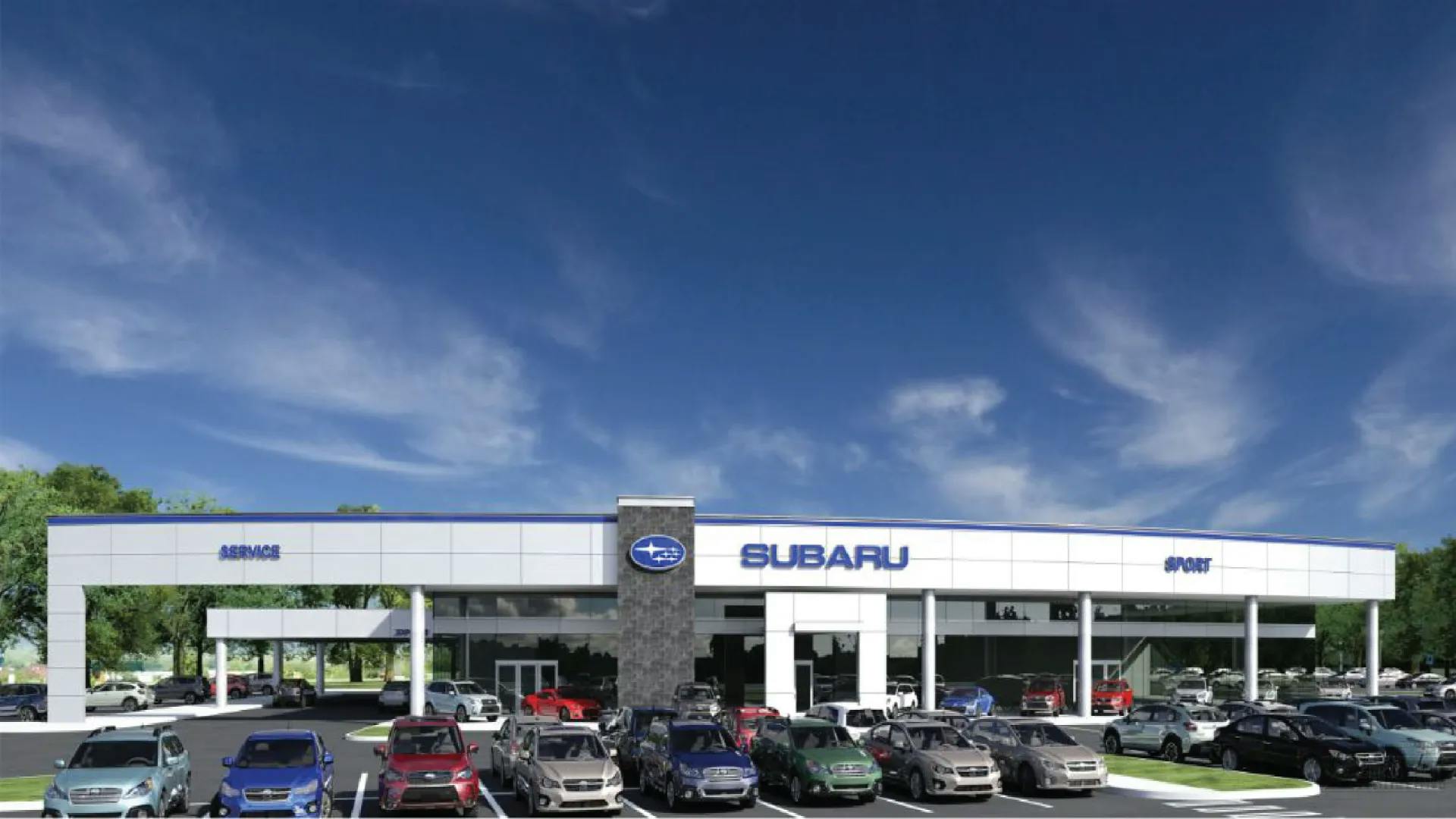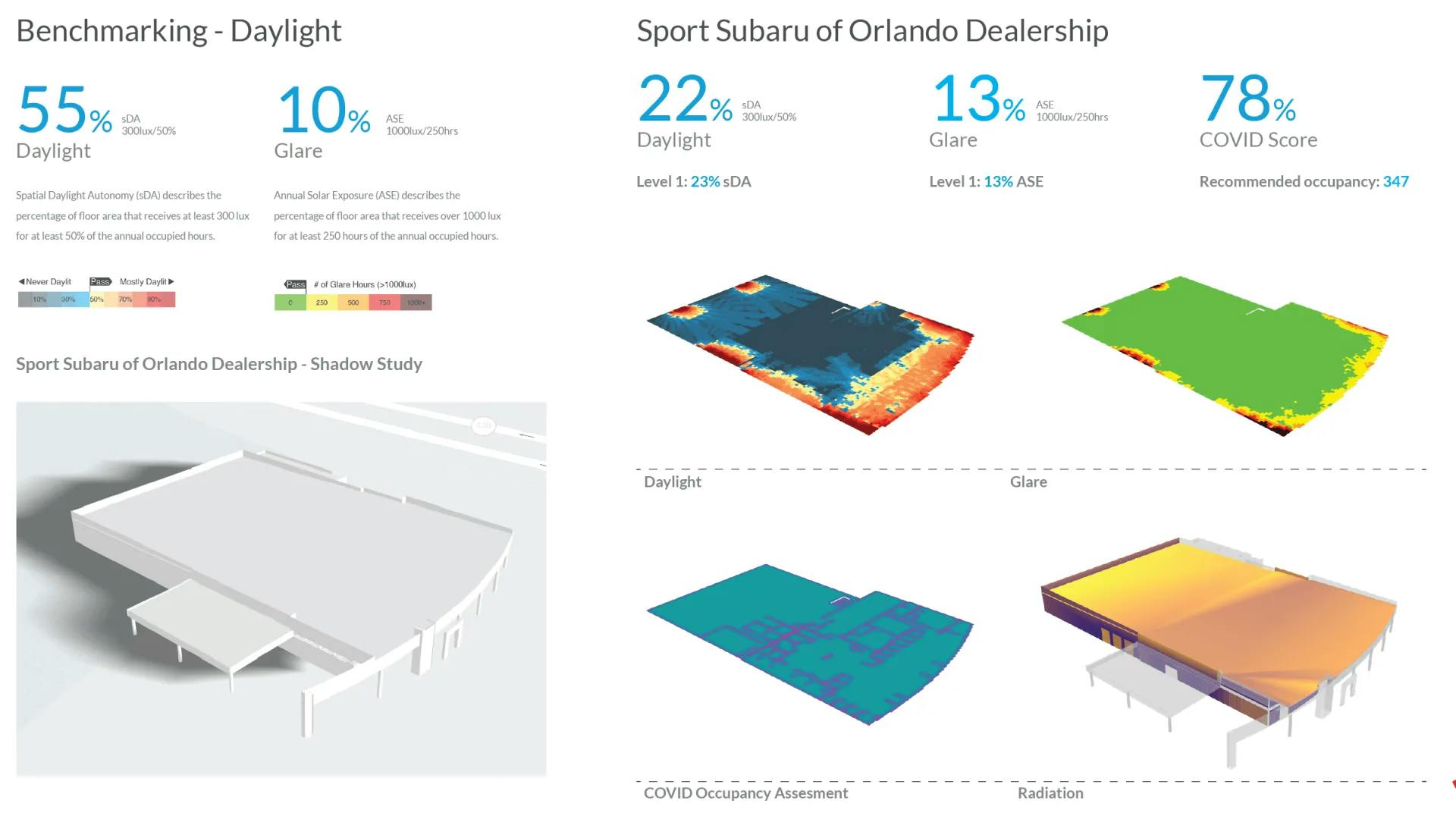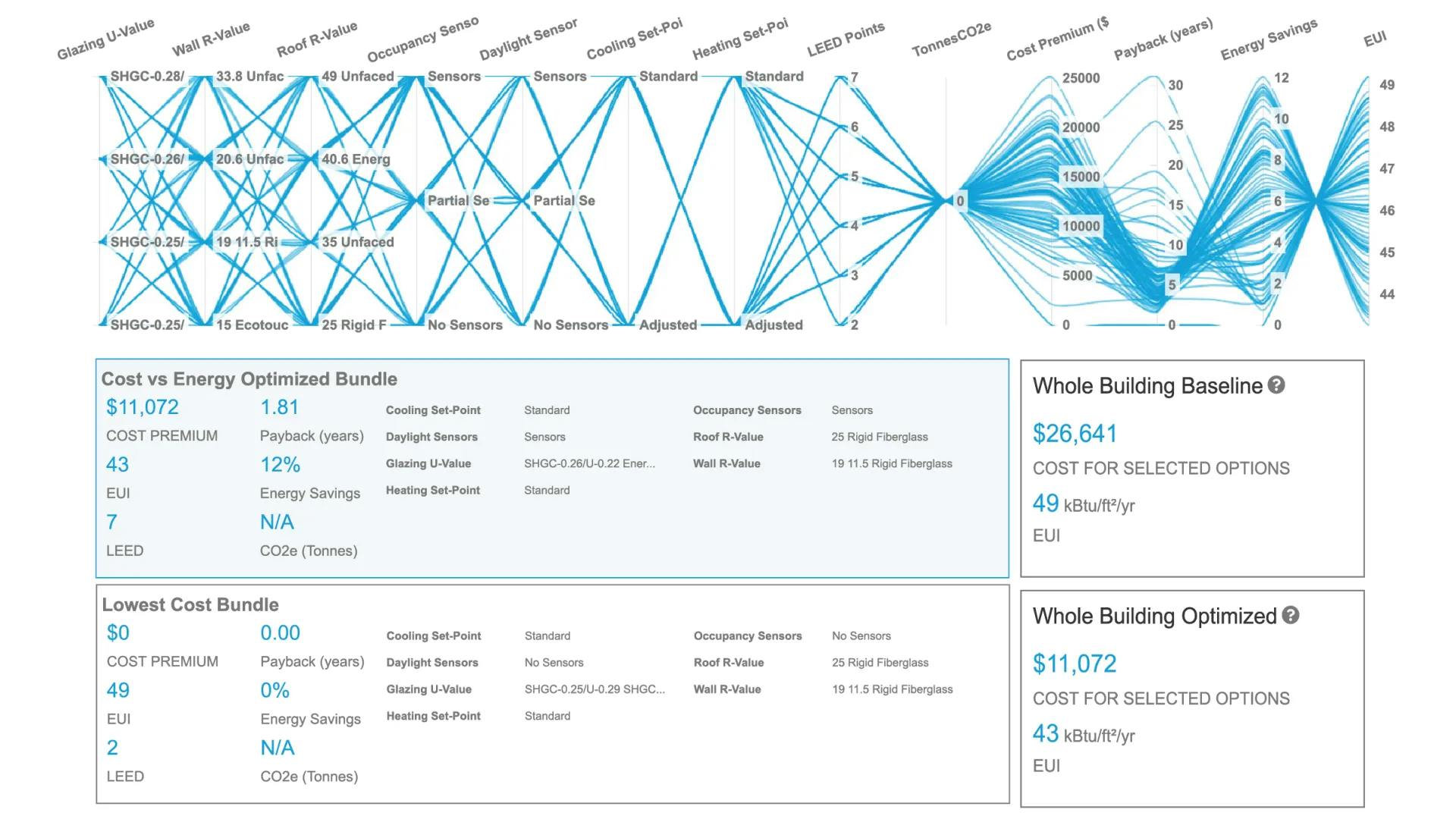Collaborate, Innovate and Create.
Praxis3, an architecture and multi disciplinary design firm based in the Atlanta, GA, is a leader in the design of automotive dealerships, historic renovations, and higher education. They are great example of a firm with visionary leadership who cares about sustainability while delivering code compliant cost effective buildings. Judging by their awards it is easy to see why they are a growing firm in the Southeast of the United States.
- They have won AIA awards almost every year since 2009
- They are #17 in the Atlanta's top 25 architectural firms
- They have won the PSMJ Circle of Excellence award for 6 consecutive years
How is Praxis3 leveraging technology to Innovate?
Using technology for code compliant, day-lit, glare free, COVID ready spaces (From Pursuit to Construction)
Every architect is familiar with the balancing act that must be done on every project. Balancing of aesthetic, regulations, performance, program, master plan, and many more parameters against the project budget is a difficult task. Praxis3 believes that if done right, neither of these, including sustainability, should cost more than any other project. By making data driven decisions they find alternatives that satisfy all the requirements and focus on making "sustainability" or "performance" not just "nice to have" but a "must have" to keep the project in budget and the program intact. They understand that the building types they design must balance up front construction expenditures with long term operating expenses. Essentially, moving beyond LEED to follow the idea of holistic design solutions and workflows. Here is a case study of their tech driven process in action:
Sport Subaru of Orlando

The design team with Justin Kruemmel and others utilized the fixed project parameters to optimize it from Schematic Design Phase to the Construction Design Phase. The key project criteria the team wanted to utilize data driven decision making inlcuded daylighting and energy code compliance for the project cost. Since "the photometrics for these dealerships and service shops are critical and the photometrics are run with no inclusion of natural daylighting into the space", the team wanted to challenge themselves to take advantage of daylight and reduce the overall lighting power density in the space.
Optimizing for Daylight Access
The daylight quality of any space, including this automotive facility, is dependent on a few key parameters: Massing (to make sure the glazing is not in constant shade, the space is not too deep) and Programming (to make sure the spaces that benefit from daylight exposure are arranged in the day-lit and glare free zones). Since the team did not have the ability to change out the massing entirely, they started with some quick shadow and radiation studies to better understand where to place the glazing to get high daylight but not the heat gain. In addition to the performance studies, due to the COVID-19 pandemic, they also studied the COVID Occupancy score for their project.

In the past the team hired consultants and the above studies would have taken about 60 Hours or $30,000 in consulting fees, were completed by the Praxis3 team in 45 minutes from start to finish. This essentially recaptured 90% of the consulting fee in-house and showcased their use of technology to save time. Additionally, utilizing rapid feedback allowed the team to avoid costly design revisions throughout the project. Starting on the top left (going clockwise) the diagram showcases:
- Benchmarking: Which helps understand the correct daylight and glare parameters as a starting point for the project, These are derived from the LEED and WELL building standards.
- Actual Metrics: As they compere to the benchmarks. For example, the benchmark suggests a minimum daylight of 55%, but the facility achieves only 22%. This is helpful to understand for the massing so that the design team can optimize the 22% daylight on the program elements that will benefit the most from them. The glare metrics show that the building facade shading strategy is working quite well. The COVID score highlights the overall area in the building that can allow occupants to maintain social distancing.
- The colored diagrams graphically showcase the metrics presented right above them, starting with daylight, glare, COVID, and radiation maps. The analysis types are used together to better understand the facade design, program layout, lighting design, and more,
Optimizing for Project Budget and Code Compliance
Next, the team started studying the energy analysis of the project, to see how it compared to the local energy regulations and how to optimize it to meet the regulations for the lowest upfront cost. After completing the initial set of building analysis and optimizing the massing, the Praxis3 team studied a range of alternatives to find the most cost optimal way to get to the 10% energy savings for an Energy Use Intensity (EUI) of 43 kBTU/sf/yr. The parametric optimization allowed the team to study a range of alternatives including:
- Four different options for roof assemblies
- Two lighting options
- Three shading options
- Two set-point option,
- Four glass options and 4 wall section options.
As seen in the diagram below, not only does each option have a performance value associated with it, but also a cost. The purpose of optimization modeling is to develop bundle recommendations of energy conservation measures (ECM’s) to show various ways of achieving the project’s energy code compliance strategy in the most cost-effective manner. This also means that the design does not have to be compromised. These variables utilized for a parametric analysis and an ECM bundling exercise to develop the ‘Optimized Design’ recommendations. In addition to the impact on performance, each variable also had an impact on the project's budget. The holistic cost vs energy optimization allowed the team to study all 768 combination and pick the lowest cost option. This allowed the team to meet the performance targets. Below are all the options that were studied, along with their impact on the project's budget.

In the diagram below, each vertical axis is one possible decision, and each point within the axis is an option for that decision. As an example, the first bar shows 4 glass options, the second bar shows 4 wall options and so on. These options are then balanced against cost, payback years, energy targets and LEED. Of all 768 options, the team utilized the dynamic slider to eliminate bundles that did not meet the project’s EUI target. As can be seen from the figure below, the cost vs energy optimized bundle allowed the team to get to an EUI of 43 Kbtu/sf/yr with a 1.8 year payback. The traditional methodology of studying this was to study one alternative at a time, but that leads to inaccurate outputs since every variable impacts every other variable. For example, if we get a high performance glass, we may be able to choose a lower cost HVAC system. It took the team less than 15 minutes to customize their alternatives and run the optimization.

